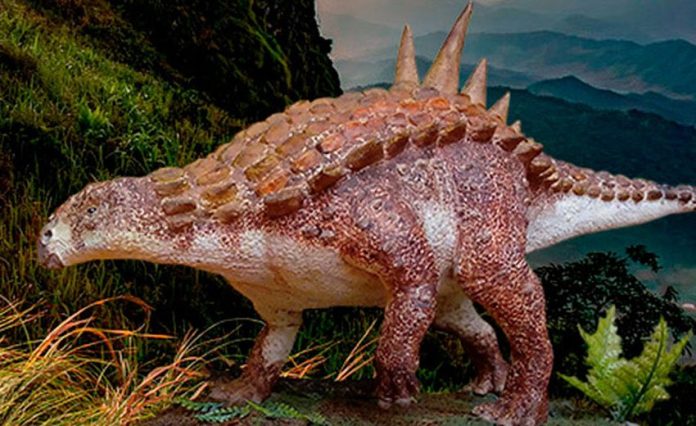Mexican paleontologists working with German researchers have discovered fossil evidence in Coahuila of a dinosaur genus that wasn’t previously known to have existed in Mexico.
A team of scientists from Saltillo’s Museum of the Desert (Mude), the Mexican Geological Service (SGM), the Karlsruhe State Museum of Natural History and the University of Heidelberg found a fossilized tooth and vertebra of a Parkosaurus dinosaur, a genus that lived more than 70 million years ago.
The discovery of the Parkosaurus fossils is the first of its kind in Mexico and the farthest south on the American continent.
In 2014, the Mexican and German researchers located a site on an ejido, or communal land, in the southeastern Coahuila municipality of General Cepeda that contained large quantities of fossils.
The location in an arid area known as Las Aguilas has been described as a huge dinosaur graveyard.
During the exploration of the site, the scientists found fossil material that they initially thought was coprolite, or in other words – fossilized feces.
However, laboratory testing determined that among the material was a tooth and vertebra that were confirmed as belonging to the herbivorous Parkosaurus genus.
The scientists’ findings were first published in September in an article published in the Bulletin of the Mexican Geological Society under the title First occurrence of Parkosauridae in Mexico.
Héctor Rivera Sylva, head of the Department of Paleontology at Mude, told the National Council for Science and Technology (Conacyt) that the delay between the discovery and the recent publication was due to the careful study and documentation of the fossils that was required because the Parkosaurus is a “little-studied and little-understood” genus.
“. . . You write the article, it’s sent to a peer-reviewed journal, they send it to assessors and once approved, it sees the light of day,” Rivera said.
He explained that the Parkosaurus was a medium-sized dinosaur that lived during the late Cretaceous period around 72 million years ago. The two-legged reptile measured between two and four meters in length.
“This family has been found in North America and in the north of China . . . most were found in Canada and the United States. But the most southerly record so far is the one we have in Coahuila,” Rivera said.
Through analysis of the vertebra, scientists determined that the fossils came from a juvenile dinosaur that died while still growing.
Proof that the Parkosaurus once roamed the territory where Coahuila is located today further enhances the northern border state’s reputation as Mexico’s “land of dinosaurs.”
Earlier this year, paleontologists announced that dinosaur fossils unearthed eight years ago in Coahuila had led to the discovery of a new species that lived in Mexico 85 million years ago.
Acantholipan gonzalezi, which belongs to the nodosaurus family, is the oldest dinosaur to have been found in the region.
Mexico News Daily
